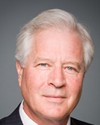Thank you, Mr. Shipley.
I'm going to go to Mr. Harris, from the NDP.
Evidence of meeting #38 for Public Accounts in the 40th Parliament, 3rd session. (The original version is on Parliament’s site, as are the minutes.) The winning word was helicopters.
A recording is available from Parliament.
Liberal
NDP

Jack Harris NDP St. John's East, NL
Thank you, Mr. Chair.
I do want to get to the Chinook acquisition, but before I do I want to make a general statement, similar to Mr. Kramp's, that the Canadian Forces obviously deserve to have the equipment they need to do the job. The experience, actually, we've seen in Afghanistan is that they get it. When they needed Chinooks because we needed medium- to heavy-lift helicopters, we got them. And they used them. We needed the LAV IVs, and we got them. There were some issues and problems, but we got them. They were put in use and they were made available. When we needed the Mi-17s, even though nobody knew about it, we got them.
I don't think there's an issue, from the Canadian public's point of view, of being concerned about our forces being able to get the equipment they need, particularly in a war zone such as Afghanistan. We're talking here about procurement processes, something the Canadian public has a particular interest in because they're paying the bills. We have a right to criticize it, and that criticism deserves to be considered on its merits. This is no reflection on anybody's job, particularly those who are here in uniform or who are fighting in uniform, but Canadians who are paying the bills deserve to know.
When we look at the Chinooks, then, let me ask this question. I'm not going to get into a factual debate—you folks apparently have accepted all the facts that Ms. Fraser has laid on the line—but it seems clear from Ms. Fraser's report that a decision was made sometime in 2005 on the acquisition of the Chinooks. It was “...concluded very early in this acquisition process that the Chinook helicopter was the only one capable of meeting its needs”. That's in paragraph 6.78. In “...the fall of 2005, National Defence was considering a sole-source procurement with Boeing”. By June 2006, there was a formal conclusion that Boeing was the only project that complied.
We're dealing with a helicopter that seems to cost—and I'm looking at the per item cost, not the other matters that are added in terms of project management...modifications are probably included, but there's a lot of other costs—about $83 million each to buy. We do know from recent information stories that, for example, the Russian helicopter, the Mi-17, which is a little less capable—it can't lift as much, it's a little bit smaller, and you can probably buy four for the cost of one Chinook—has a figure of $17 million.
Mr. Ross is shrugging here. I'm basing it on information from the U.S. government--some figures as low as $10 million. The Americans are buying them. We've obviously leased them. The American congressmen don't like the idea of buying Russian aircraft because of Buy American policies, etc.
Was there any serious consideration given to options other than Chinook? I'm not saying the Chinook is a bad plane. I was on them in Afghanistan, as I'm sure some of you have been, and they're very capable aircraft. But, for example, the Mi-17s are already capable of flying in ice conditions, which we had to modify the Chinooks to get for their long-term projects. Why weren't other options considered that might be cheaper but could do the job required?
I mean, let me guess, someone decided they liked the Chinook and the specifications may have been aimed towards that aircraft so we could actually acquire it. That's a criticism that's been made by others, not me, but it seems to me that the onus is on you folks to say that ain't so and to tell us why.
Assistant Deputy Minister (Materiel), Department of National Defence
Perhaps I'll let General Deschamps talk to the operational requirement that the Chinook performs.
To answer your questions more specifically about whether we considered other options in the fall of 2005 and the spring of 2006, the answer is yes. We very, very diligently looked at the Sikorsky H-53 large helicopter, which is obsolete and has been out of production for almost 20 years. We looked at being able to modify a Cyclone to utility configuration, to carry a platoon of infantry and its equipment and so on, or lift a gun. We looked at the EH101, the European helicopter, and frankly, everything else. They failed to meet the normal minimum performance requirements of altitude, temperature, and lifting that platoon of infantry or the lightweight gun, in at least several of those parameters quite significantly.
The fact is the Chinook F in production really was the only thing available in the world.
We looked at the Russian helicopters very briefly, but you can't go to Russian aircraft because of air certification reasons. The Russians have never made any significant effort to meet western safety certification standards, so they're not certifiable under the FAA or Transport Canada. And for supportability reasons, it's not practical to try to run a Russia helicopter within NATO.
So yes, sir, we did look very, very carefully at everything we could find out there.
Liberal

The Chair Liberal Joe Volpe
That's about it, Mr. Ross. You and Mr. Harris used up all of those five minutes.
Mr. Young.
Conservative

Terence Young Conservative Oakville, ON
Thank you, Chair.
Mr. Fonberg, your department is responsible for prosecuting the war in Afghanistan. Because a considerable amount of secrecy is required in fighting a war, do you have concerns with the acquisition process with regard to secrecy and keeping the troops secure?
Deputy Minister, Department of National Defence
No, I do not have concerns.
I might let the vice-admiral or the ADM Materiel speak to that issue. Where, for operational security purposes, we need alternative procurement processes with Public Works and Treasury Board, we have those in place.
Conservative

Terence Young Conservative Oakville, ON
Madam Fraser, in your last statement—which for me was the most important one—there was a suggestion that the acquisition process might not necessarily be suited to the purchase of complex equipment requiring modifications or development.
Could you expand on that and say why you suggested it?
Auditor General of Canada, Office of the Auditor General of Canada
I think this is actually one of the most important issues coming out of this audit. It is that a lowest-price-compliant approach is appropriate when you're buying existing equipment, the off-the-shelf type. But when you're into developmental projects, I question whether that is the most appropriate approach. I would certainly encourage National Defence and Public Works to give some thought to that. When they're into these very large, complex acquisitions, it may be difficult to establish all of the requirements.
As we've seen, requirements have moved, and have been elaborated, with more thought and specification being given to them over several years. So how can you put out a bid in year one when the requirements are going to be moving and refined like that? I really think there needs to be a different approach taken in those cases.
Conservative

Terence Young Conservative Oakville, ON
Mr. Guimont, you referred to that as well in your address. I wonder if you would comment on it.
Deputy Minister and Deputy Receiver General for Canada, Department of Public Works and Government Services
I agree with the AG. In the department, we use both lowest-price-compliant and best-value-for-the-crown. But after discussions in the department and in view of the audit, our action plan clearly says that we need to look into this question.
What we need is a framework. I don't have a framework now. A framework would guide people so that when we decide to look at a major acquisition—off the shelf but with modifications—we would have a better sense of whether we should go lowest bid or best value. This is a good suggestion, and lessons learned are telling us the same thing.
Conservative

Terence Young Conservative Oakville, ON
Mr. Ross, as parliamentarians we have to explain some of these matters to our constituents. They have no reference point, because consumers don't buy anything that takes up to 12 years to deliver. Even if they buy a house, usually they're going to have it within a year.
Could you explain to the committee why it takes up to 12 years to purchase a helicopter?
Assistant Deputy Minister (Materiel), Department of National Defence
It doesn't take 12 years to purchase a helicopter based on a best-value, performance-based process. I think it does when you take three of four years just to write the specifications—very detailed specifications—in a lowest-price-compliant process.
Right off the bat, lowest-price-compliant with a detailed specification costs you five years. That's the maritime helicopter project. The Chinook project was not lowest-price-compliant. It was performance-based, best overall value, and it will be completed in far less than 12 years.
Conservative

Terence Young Conservative Oakville, ON
In addition to a need for larger gas tanks, because we need these aircraft to go farther, what other things would have to be added that would increase the cost?
Chief of Air Staff, Department of National Defence
For the Chinook Foxtrot, the other consideration, environmentally, was self-defence. Although there was a basic suite available to the Foxtrot, the one we went to was the one that is equipped on our other platforms that are dealing with future threats, and the one that the Americans are going to retrofit to their Foxtrots in later years. It was important to do it right at the outset, which is less expensive than retrofitting. That's why we had to work with Boeing to make sure that the right kit was put on the airplane upfront instead of later.
Liberal
Auditor General of Canada, Office of the Auditor General of Canada
Chair, I'll ask Mr. Berthelette to respond to the question.
Jerome Berthelette Assistant Auditor General, Office of the Auditor General of Canada
Mr. Chair, in exhibit 6.6, what you see set out here is the division of costs related to the Chinook helicopter, divided into parts. The first part relates to the capital costs related to the helicopter. You can see that in terms of the capital costs for the acquisition of the helicopter, between the preliminary project approval in June 2006 and the effective project approval in 2009, there was an increase from $2 billion to approximately $2.3 billion.
Now there's more to delivering a Chinook helicopter than the acquisition of the piece of kit. There are also, of course, contracted in-service support, personnel and other operating costs. So when we speak to the issue of detailed life-cycle planning and how it was begun late, what we are referring to is the cost of delivering the full capability. So when you look further down, you will see that at the preliminary project approval stage in June 2006, no costs were included for contracted in-service support, National Defence personnel, or National Defence operating costs.
When you look again at the effective project approval stage, you will see that contracted in-service support was included, but as of the effective date, there were no costs for personnel and no costs for operating. So when we add this up, of course, it goes from being $2 billion to $4.8 billion.
Liberal

Jean-Claude D'Amours Liberal Madawaska—Restigouche, NB
Madam Fraser, I would like to know whether in 2006, when you conducted your audit, discussions between Boeing and the Department of National Defence led the latter to conclude that the Chinook was the only existing certified helicopter in production capable of meeting its needs. Would you agree with me on that?
Auditor General of Canada, Office of the Auditor General of Canada
I believe that we are in agreement. I think that our report states that the department concluded that Boeing was the only company able to meet its needs.
Liberal

Jean-Claude D'Amours Liberal Madawaska—Restigouche, NB
Thank you, Madam Fraser.
Lieutenant-General Deschamps, you said earlier that the Chinooks required some modifications or add-ons. In fact, you said that it was less expensive to add that equipment right at the start rather than retrofitting. There is an enormous contradiction between what the Auditor General found and what the departments have stated. If those helicopters were ready to be built and met the needs, how come the needs today are no longer the same? As you said, it is cheaper to add the platforms up front. And so we are no longer talking about the same thing.
As I have already said, someone is responsible. I do not know whether one of the witnesses here is able to tell us who that person is. They will all say they are not the ones responsible. We are still talking about a helicopter that is ready to be built, available, in production and certified. Mr. Ross said earlier that there was an endless number of certifications required. And yet, it was stated that the helicopter was certified.
It is as if there was an attempt to confuse us. Can someone here this morning tell us who is responsible for this bureaucratic mishmash? If none of you can, could you tell us who should be called before this committee in order to explain what this is all about? Earlier, someone said that this was not a certified helicopter, but then the Auditor General said that she agreed with what I had stated, i.e., that it was certified. Who is responsible? Give us their names so that they can provide the committee with a clear explanation as to why it was considered to be a good helicopter at the time, when it is not yet in production today. The technology does not exist and platforms have to be added, among other things.
Deputy Minister, Department of National Defence
Do we have any time left to answer, Mr. Chair?
Liberal

The Chair Liberal Joe Volpe
No, but after I go through everybody, I'll give you an opportunity to answer that. So think about it for a few minutes, Mr. Fonberg. I'll give you a chance--no problem.
Mr. Dreeshen.
Conservative

Earl Dreeshen Conservative Red Deer, AB
Thank you very much.
One of the questions I have will perhaps give you an opportunity to answer the question that was just posed. I don't think it is quite that confusing.
I wanted to talk about what the vice-admiral had indicated on the investment plan, the in-service support, and the budgeting associated with it. I know Madam Fraser had also talked about recommendations that she had on in-service support management and how that can be dealt with, as far as National Defence is concerned.
My question is specifically to DND. We're seeing about half of the total project cost being related to this in-service support. I guess I'd like to know what process you used to determine those costs and what time you started estimating what the costs were going to be. Can you give us some idea in your action plan of how we can make sure the public really understands what is involved there?